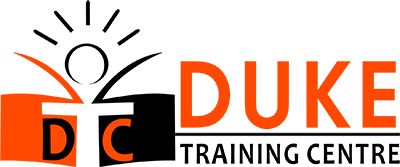The Certified Tester Foundation Level in Software Testing

The Foundation Level qualification is aimed at anyone involved in software testing. This includes people in roles such as testers, test analysts, test engineers, test consultants, test managers, user acceptance testers, and software developers. This Foundation Level qualification is also appropriate for anyone who wants a basic understanding of software testing, such as product owners, project managers, quality managers, software development managers, business analysts, IT directors and management consultants. Holders of the Foundation Certificate will be able to go on to higher-level software testing qualifications.
The ISTQB Foundation Level Overview 2018 is a separate document which includes the following information:
- Business outcomes for the syllabus
- Matrix showing traceability between business outcomes and learning objectives
- Summary of this syllabus
How this Syllabus is Organized
There are six chapters with examinable content. The top-level heading for each chapter specifies the time for the chapter; timing is not provided below chapter level. For accredited training courses, the syllabus requires a minimum of 16.75 hours of instruction, distributed across the six chapters as follows:

- Chapter 1: 175 minutes Fundamentals of Testing
- Chapter 2: 100 minutes Testing Throughout the Software Development Lifecycle
- Chapter 3: 135 minutes Static Testing
- Chapter 4: 330 minutes Test Techniques
- Chapter 5: 225 minutes Test Management
- Chapter 6: 40 minutes Tool Support for Testing
Learning Objectives for Fundamentals of Testing:
1.1 What is Testing?
FL-1.1.1 (K1) Identify typical objectives of testing
FL-1.1.2 (K2) Differentiate testing from debugging
1.2 Why is Testing Necessary?
FL-1.2.1 (K2) Give examples of why testing is necessary
FL-1.2.2 (K2) Describe the relationship between testing and quality assurance and give examples of how testing contributes to higher quality
FL-1.2.3 (K2) Distinguish between error, defect, and failure
FL-1.2.4 (K2) Distinguish between the root cause of a defect and its effects
1.3 Seven Testing Principles
FL-1.3.1 (K2) Explain the seven testing principles
1.4 Test Process
FL-1.4.1 (K2) Explain the impact of context on the test process
FL-1.4.2 (K2) Describe the test activities and respective tasks within the test process
FL-1.4.3 (K2) Differentiate the work products that support the test process
FL-1.4.4 (K2) Explain the value of maintaining traceability between the test basis and test work products
1.5 The Psychology of Testing
FL-1.5.1 (K1) Identify the psychological factors that influence the success of testing
FL-1.5.2 (K2) Explain the difference between the mindset required for test activities and the mindset required for development activities
Learning Objectives for Testing Throughout the Software Development Lifecycle
2.1 Software Development Lifecycle Models
FL-2.1.1 (K2) Explain the relationships between software development activities and test activities in the software development lifecycle
FL-2.1.2 (K1) Identify reasons why software development lifecycle models must be adapted to the context of project and product characteristics
2.2 Test Levels
FL-2.2.1 (K2) Compare the different test levels from the perspective of objectives, test basis, test objects, typical defects and failures, and approaches and responsibilities
2.3 Test Types
FL-2.3.1 (K2) Compare functional, non-functional, and white-box testing
FL-2.3.2 (K1) Recognize that functional, non-functional, and white-box tests occur at any test level
FL-2.3.3 (K2) Compare the purposes of confirmation testing and regression testing
2.4 Maintenance Testing
FL-2.4.1 (K2) Summarize triggers for maintenance testing
FL-2.4.2 (K2) Describe the role of impact analysis in maintenance testing
Learning Objectives for Static Testing
3.1 Static Testing Basics
FL-3.1.1 (K1) Recognize types of software work product that can be examined by the different static testing techniques
FL-3.1.2 (K2) Use examples to describe the value of static testing
FL-3.1.3 (K2) Explain the difference between static and dynamic techniques, considering objectives,
types of defects to be identified, and the role of these techniques within the software lifecycle
3.2 Review Process
FL-3.2.1 (K2) Summarize the activities of the work product review process
FL-3.2.2 (K1) Recognize the different roles and responsibilities in a formal review
FL-3.2.3 (K2) Explain the differences between different review types: informal review, walkthrough, technical review, and inspection
FL-3.2.4 (K3) Apply a review technique to a work product to find defects
FL-3.2.5 (K2) Explain the factors that contribute to a successful review
Learning Objectives for Test Techniques
4.1 Categories of Test Techniques
FL-4.1.1 (K2) Explain the characteristics, commonalities, and differences between black-box test techniques, white-box test techniques, and experience-based test techniques
4.2 Black-box Test Techniques
FL-4.2.1 (K3) Apply equivalence partitioning to derive test cases from given requirements
FL-4.2.2 (K3) Apply boundary value analysis to derive test cases from given requirements
FL-4.2.3 (K3) Apply decision table testing to derive test cases from given requirements
FL-4.2.4 (K3) Apply state transition testing to derive test cases from given requirements
FL-4.2.5 (K2) Explain how to derive test cases from a use case
4.3 White-box Test Techniques
FL-4.3.1 (K2) Explain statement coverage
FL-4.3.2 (K2) Explain decision coverage
FL-4.3.3 (K2) Explain the value of statement and decision coverage
4.4 Experience-based Test Techniques
FL-4.4.1 (K2) Explain error guessing
FL-4.4.2 (K2) Explain exploratory testing
FL-4.4.3 (K2) Explain checklist-based testing
Learning Objectives for Test Management
5.1 Test Organization
FL-5.1.1 (K2) Explain the benefits and drawbacks of independent testing
FL-5.1.2 (K1) Identify the tasks of a test manager and tester
5.2 Test Planning and Estimation
FL-5.2.1 (K2) Summarize the purpose and content of a test plan
FL-5.2.2 (K2) Differentiate between various test strategies
FL-5.2.3 (K2) Give examples of potential entry and exit criteria
FL-5.2.4 (K3) Apply knowledge of prioritization, and technical and logical dependencies, to schedule test execution for a given set of test cases
FL-5.2.5 (K1) Identify factors that influence the effort related to testing
FL-5.2.6 (K2) Explain the difference between two estimation techniques: the metrics-based technique and the expert-based technique
5.3 Test Monitoring and Control
FL-5.3.1 (K1) Recall metrics used for testing
FL-5.3.2 (K2) Summarize the purposes, contents, and audiences for test reports
5.4 Configuration Management
FL-5.4.1 (K2) Summarize how configuration management supports testing
5.5 Risks and Testing
FL-5.5.1 (K1) Define risk level by using likelihood and impact
FL-5.5.2 (K2) Distinguish between project and product risks
FL-5.5.3 (K2) Describe, by using examples, how product risk analysis may influence the thoroughness and scope of testing
5.6 Defect Management
FL-5.6.1 (K3) Write a defect report, covering defects found during testing







